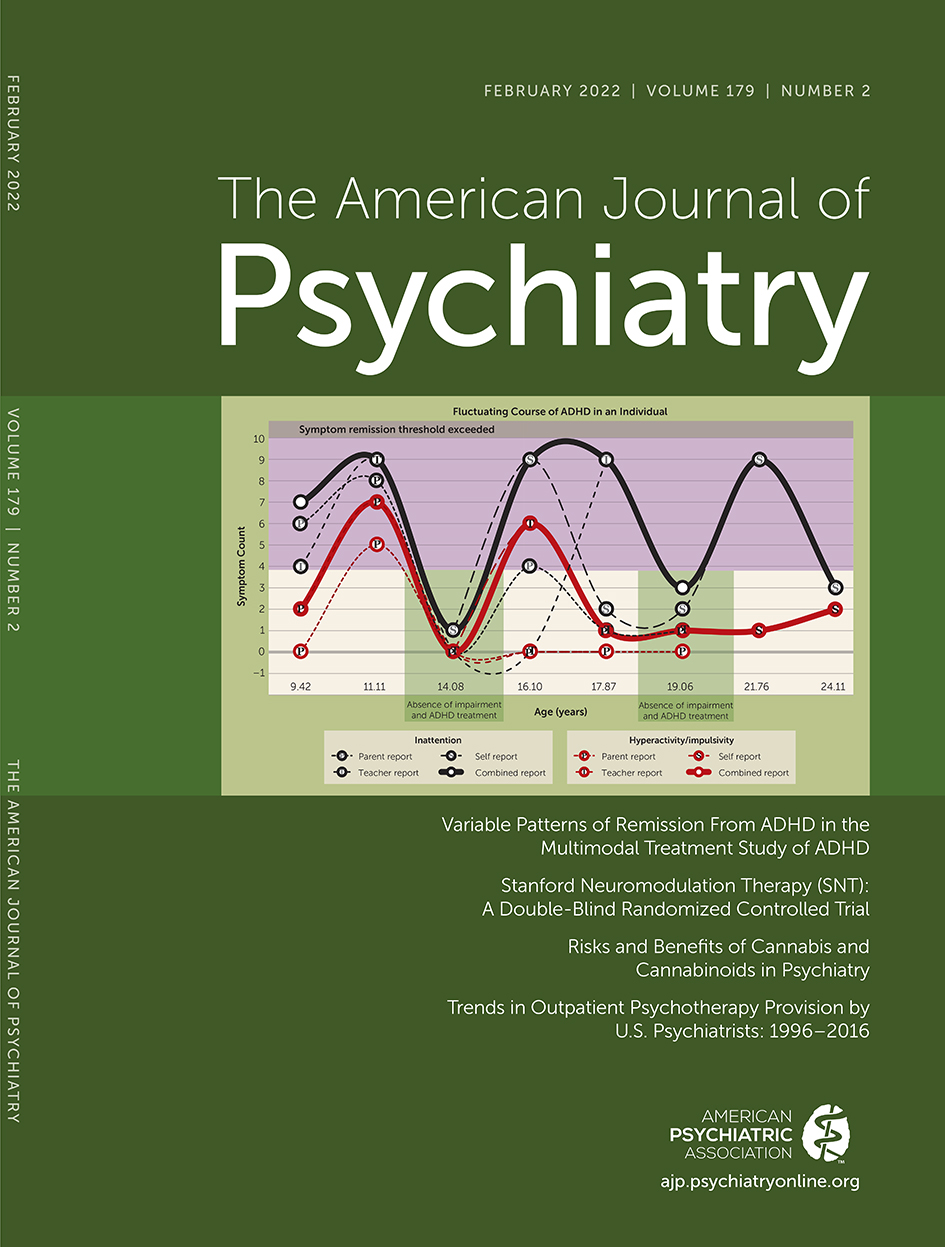Stanford Neuromodulation Therapy (SNT): A Double-Blind Randomized Controlled Trial
Abstract
Objective:
Depression is the leading cause of disability worldwide, and half of patients with depression have treatment-resistant depression. Intermittent theta-burst stimulation (iTBS) is approved by the U.S. Food and Drug Administration for the treatment of treatment-resistant depression but is limited by suboptimal efficacy and a 6-week duration. The authors addressed these limitations by developing a neuroscience-informed accelerated iTBS protocol, Stanford neuromodulation therapy (SNT; previously referred to as Stanford accelerated intelligent neuromodulation therapy, or SAINT). This protocol was associated with a remission rate of ∼90% after 5 days of open-label treatment. Here, the authors report the results of a sham-controlled double-blind trial of SNT for treatment-resistant depression.
Methods:
Participants with treatment-resistant depression currently experiencing moderate to severe depressive episodes were randomly assigned to receive active or sham SNT. Resting-state functional MRI was used to individually target the region of the left dorsolateral prefrontal cortex most functionally anticorrelated with the subgenual anterior cingulate cortex. The primary outcome was score on the Montgomery-Åsberg Depression Rating Scale (MADRS) 4 weeks after treatment.
Results:
At the planned interim analysis, 32 participants with treatment-resistant depression had been enrolled, and 29 participants who continued to meet inclusion criteria received either active (N=14) or sham (N=15) SNT. The mean percent reduction from baseline in MADRS score 4 weeks after treatment was 52.5% in the active treatment group and 11.1% in the sham treatment group.
Conclusions:
SNT, a high-dose iTBS protocol with functional-connectivity-guided targeting, was more effective than sham stimulation for treatment-resistant depression. Further trials are needed to determine SNT’s durability and to compare it with other treatments.



